Einleitung
Diese Anleitung zeigt dir, wie du das Display an deinem MacBook Pro (13 Zoll, Mitte 2009, Unibody) austauschen kannst.
Werkzeuge
Ersatzteile
-
-
Entferne die folgenden 10 Kreuzschlitz-Schrauben, die die Gehäuse-Unterseite des MacBook Pro 13" Unibody befestigen:
-
Sieben 3 mm Schrauben.
-
Drei 13,5 mm Schrauben.
-
-
-
Hebe die Unterseite vorsichtig an und drücke sie Richtung Rückseite des Laptops, um die Halterungsclips zu lösen.
-
-
-
Löse mit der Kante eines Spudgers den Akkuanschluss nach oben, weg vom Sockel auf dem Logic Board.
-
-
-
Heble den Stecker vom Subwoofer/rechten Lautsprecher mit dem flachen Ende des Spudgers aus seinem Sockel auf dem Logic Board.
-
-
-
Löse das Kamerakabel, indem es gerade aus seinem Sockel herausziehst.
-
Wenn du ein kleines Stück Plastik am Logic Board findest, das das Kamerakabel am herausrutschen hindert, löse es vorsichtig vom Logic Board. Erhitze es im Zweifel mit einem Fön oder einer Heißluftpistole, um den Kleber zu lösen. Versuche nicht, das Kabel über das Plastikstück zu ziehen.
-
Wenn du trotzdem Probleme hast, nutze die Spitze eines Spudgers und drücke abwechselnd an beiden Seiten des Anschlusses, um ihn langsam aus dem Sockel zu holen.
-
-
-
Entferne folgende Kreuzschlitzschrauben, welche das Kameradatenkabel und den rechten Lautsprecher an der Gehäuseoberseite befestigen:
-
Zwei 8 mm Schrauben
-
Eine 4 mm Schraube
-
Schiebe die Halterung des Kamerakabels unter dem Subwoofer hervor und entferne sie vom Computer.
-
-
-
Fasse die Plastikzuglasche an, welche an der Sicherung des Displaydatenkabels befestigt ist, und drehe sie zur Seite des Computers mit dem Gleichstromeingang (DC-In).
-
Ziehe den Stecker des Displaydatenkabels gerade aus seinem Sockel heraus.
-
-
-
Entferne die folgenden beiden Kreuzschlitzschrauben, welche die Halterung des Displaydatenkabels am Gehäuseoberteil befestigen:
-
Eine 7 mm Schraube
-
Eine 5 mm Schraube.
-
Hebe die Halterung des Displaydatenkabels aus dem Gehäuseoberteil.
-
-
-
Entferne die beiden äußeren 6,5 mm Torx Schrauben, welche jede der beiden Displayhalterungen am Gehäuseoberteil befestigen (also vier insgesamt).
-
-
-
Öffne das MacBook, so dass das Display senkrecht zum Gehäuseoberteil steht.
-
Stelle das geöffnete MacBook so wie gezeigt auf den Tisch.
-
Halte das Display und das Gehäuseoberteil mit der linken Hand fest. Entferne dann die letzte 6,5 mm Schraube von der unteren Displayhalterung mit einem Torx Schraubendreher.
-
-
-
Entferne die letzte 6 mm Schraube mit einem Torx Schraubendreher, welche das Display noch am Gehäuseoberteil festhält.
-
-
-
Fasse das obere Gehäuse mit der rechten Hand an und drehe es etwas in Richtung Oberkante das Displays, so dass sich die obere Displayhalterung vom Rand des Gehäuseoberteils löst.
-
Drehe das Display ein wenig vom Gehäuseoberteil weg.
-
-
-
Hebe das Display hoch und weg vom Gehäuseoberteil. Achte dabei darauf, dass sich keine Klammern oder Kabel verfangen.
-
Um dein Gerät wieder zusammenzusetzen, folge den Schritten in umgekehrter Reihenfolge.
Ein Kommentar
Does the same apply to the 2009 and 2010 15”?
IFCJW -
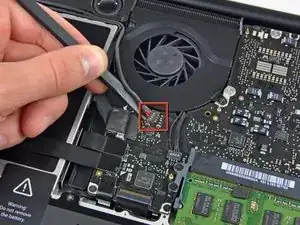
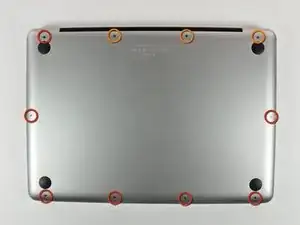
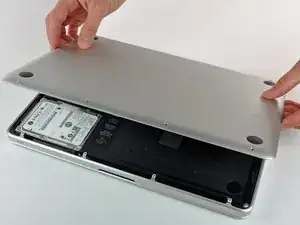
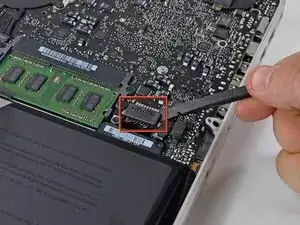
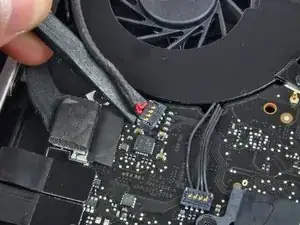
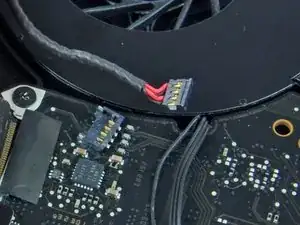
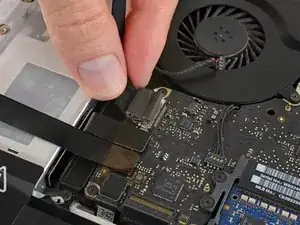
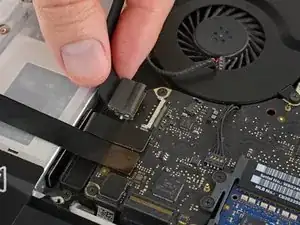
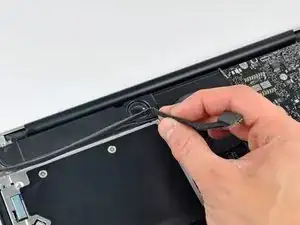
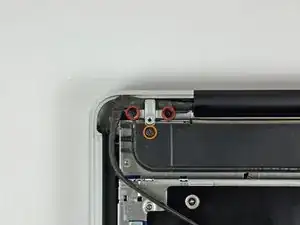
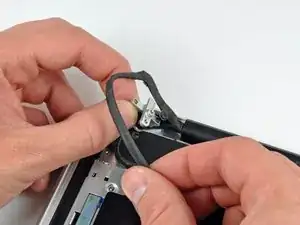
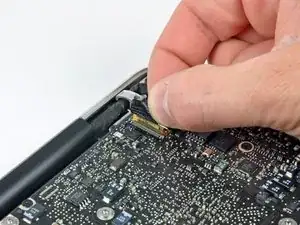
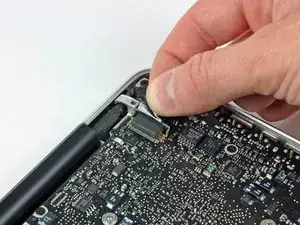

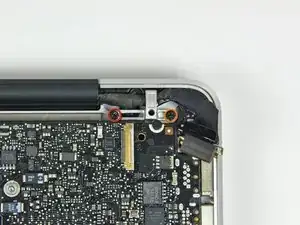
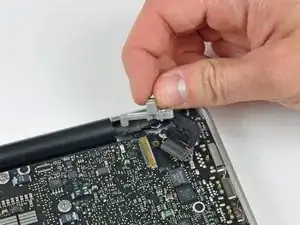
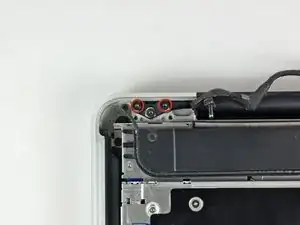
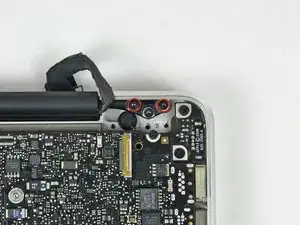
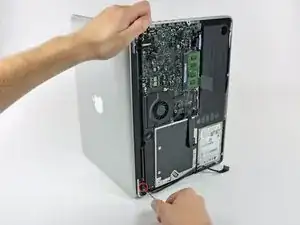
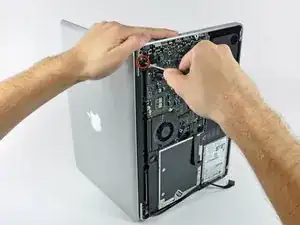
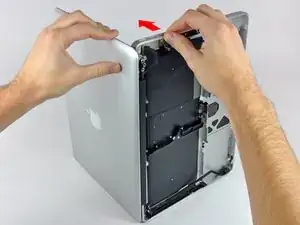
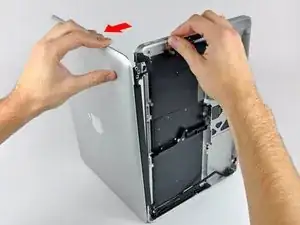
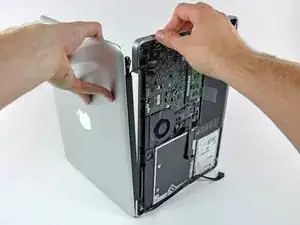

Compare the short screws carefully before reinstalling them. The shouldered screws go in the holes on the front edge.
David Kilbridge -
Before I started removing any screws I took a piece of paper and drew the bottom of the laptop and put a piece of double-sided tape in the spot where each screw goes. That way when I took out the screws, I could put them on the tape so I knew exactly which screw went in which spot. I did the same thing for dismantling the inside on another sheet of paper, then a third sheet for the screen after getting the front glass off.
mastover -
I use a similar technique: I print out the iFixit manual for the job, and Scotch-tape down the screws/brackets/cables I remove at each step next to the component descriptions. That way, when I'm reassembling, the bits are taped right next to the photo of where they came from.
adlerpe -
That's exactly what I do for all my repairs! It's the best way to keep track of all of the parts ' original location and to make sure that you don't miss any parts during reassembly.
joyitsjennie -
Great idea and one I use often
Thomas Overstreet -
Excellent idea! Thanks for sharing it here.
Laura Sharkey -
I used a 00 that fit but the screws were very tight so I used a tiny paintbrush with some wd40 on it and put it around the edges of the screws. Worked like a charm
valentinedhdh -
I use a magnetic mat and place the screws in order on that :)
Cary B -